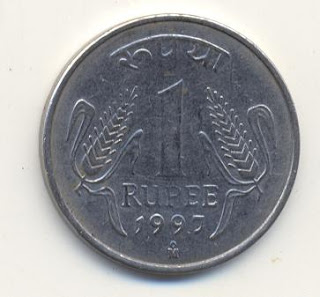Introduction
India won its independence on 15th August, 1947. During the period of transition India retained the monetary system and the currency and coinage of the earlier period. While Pakistan introduced a new series of coins in 1948 and notes in 1949, India brought out its distinctive coins on 15th August, 1950.
Chronologically, the main considerations influencing the coinage policy of Republic India over time have been:
• The incorporation of symbols of sovereignty and indigenous motifs on independence.
• Coinage Reforms with the introduction of the metric system.
• The need felt from time to time to obviate the possibility of the metallic value of coins rising beyond the face value.
• The cost-benefit of coinisation of currency notes.
Independent India Issues could broadly be categorised as: -
The Frozen Series 1947-1950This represented the currency arrangements during the transition period upto the establishment of the Indian Republic. The Monetary System remained unchanged at One Rupee consisting of 192 pies.
1 Rupee = 16 Annas1 Anna = 4 Pice1 Pice = 3 PiesThe Anna Series
Introduced on 15th August, 1950 and represented the first coinage of Republic India. The King's Portrait was replaced by the Lion Capital of the Ashoka Pillar. A corn sheaf replaced the Tiger on the one Rupee coin. In some ways this symbolised a shift in focus to progress and prosperity. Indian motifs were incorporated on other coins. The monetary system was largely retained unchanged with one Rupee consisting of 16 Annas.
Decimal Series
The 1955 Indian Coinage (Amendment) Act, that came into force with effect from 1st April 1957, introduced a Decimal series.The rupee was now divided into 100 'Paisa' instead of 16 Annas or 64 Pice.With high inflation in the sixties, small denomination coins which were made of bronze, nickel-brass, cupro-nickel, and Aluminium-Bronze were gradually minted in Aluminium. This change commenced with the introduction of the new hexagonal 3 paise coin. A twenty paise coin was introduced in 1968 but did not gain much popularity.Over a period of time, cost benefit considerations led to the gradual discontinuance of 1, 2 and 3 paise coins in the seventies; Stainless steel coinage of 10, 25 and 50 paise, was introduced in 1988 and of one rupee in 1992. The very considerable costs of managing note issues of Re 1, Rs 2, and Rs 5 led to the gradual coinisation of these denominations in the 1990s.
One "Naya" Paisa: one hundredth of a rupee, after decimalisation, 1957.
During 1835-1957 1 rupee = 16 annas = 64 pices = 192 pies
During 1957-641 rupee = 100 naya paise
Since 19641 rupee = 100 paise
The demand for decimalisation existed for over a century. Sri Lanka decimalised its rupee in 1869. The Indian Coinage Act was amended in September 1955 for the adoption of a metric system for coinage. The Act came into force with effect from 1st April, 1957. The rupee remained unchanged in value and nomenclature. It, however, was now divided into 100 'Paisa' instead of 16 Annas or 64 Pice. For public recognition, the new decimal Paisa was termed 'Naya Paisa' till 1st June, 1964 when the term 'Naya' was dropped. The coins of that period also mentioned their value in terms of the rupee to avoid confusion and cheating. For example, the one paisa coin carried the text "One hundredth of a Rupee" in Hindi.
India issues several types of coins. Commemorative coins in various denominations have been issued, including those celebrating Mahatma Gandhi, Jawaharlal Nehru, Indira Gandhi, B. R. Ambedkar, Rajiv Gandhi, Dnyaneshwar, 1982-Asian Games, Sardar Vallabhbhai Patel, Subhash Chandra Bose, Sri Aurobindo, Chittaranjan Das, and Chhatrapati Shivaji.The denominations in circulation currently are 25 and 50 paise and 1, 2 and 5 rupee coins.
COMMING SOON.............http://indiahobbies.com/
You are visitor Number
.Andale.



























